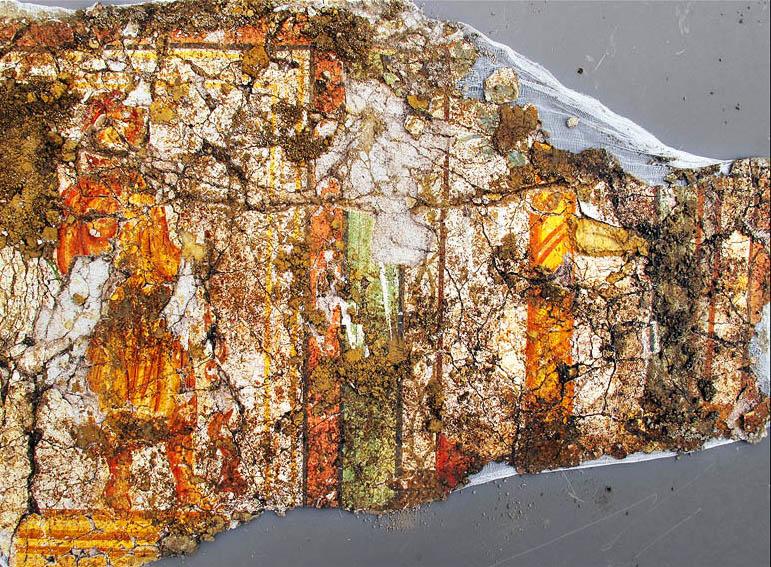You are here
From Roman legionnaires to cathedral builders: the excavation of the Place du Château in Strasbourg
In the heart of the historic center of Strasbourg, classified as a World Heritage Site, a team of Inrap archaeologists are currently excavating the Place du Château at the foot of the cathedral. This work is curated by the State (Drac Alsace).
This excavation, realized as part of the restoration of the site by the City and the Urban Community of Strasbourg, presents a unique opportunity to explore the Antique origins of the city, to discover the Roman camp of the Legio VIII Augusta, and to uncover remains associated with the construction of the cathedral.
The camp of the Legio VIII Augusta

Despite the small area excavated, the exploration of a single trench, 1.10 m wide and 3 m deep, has yielded several walls. One of the partition walls, which collapsed all at once, has a high quality mural painting on both of its sides. One painting represents columns and a panel framing a standing woman. The other consists of a beautiful red garland with a green knot. This painted plaster illustrates the status of the occupant of this building, who must have been a tribune, or at least a centurion. The two paintings were carefully removed and are currently being cleaned and restored.
Discovery of the remains of the cathedral construction site
With its 3 meters of stratigraphy, the excavation of the place du Château reveals the history of the constructors of the cathedral.
Just to the south of the cathedral, the archaeologists have uncovered the levels on which the builders circulated. These levels are composed of flakes of sandstone spread out the stone cutters in front of their workshops (the loggias). Packed down by continual trampling, these stone fragments were accumulated from the 7th to the 15th centuries to a thickness of 1 to 1.5 meters. These stone fragments provide information on the stone cutting techniques used as they still display the traces of the tools employed, including picks, kevels and polkas. Other trades are also represented: the presence of slag indicates smithing activities, layers of mortar the work of mixers, and lead and glass fragments the work of master stained glass makers. The function of an oven with a single heating chamber, dated to the 12th century, remains to be determined.
The "Maison Schoettel”
The opening of the last excavation sector, in front of the Fustel de Coulanges high school, and continuing research, have both provided additional information on the two millennia buried under the current Place du Château at the foot of the Strasbourg cathedral.
The renovation of the Place du Château
Mahaut Tyrrell
Media communication
Inrap, Partnership and media services
01 40 08 80 24
mahaut.tyrrell [at] inrap.fr
Astrid Chevolet
Cultural development and communication
Inrap, Interegional direction Grand Est sud
06 86 28 61 71
astrid.chevolet [at] inrap.fr

